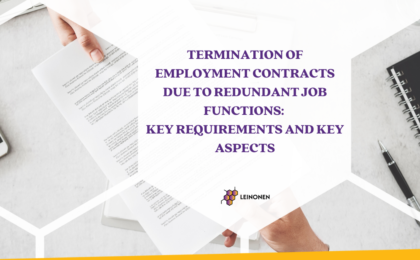„In a rapidly changing environment of business and technology, the field of accounting could not lag behind the development. Companies which had server based accounting programs, manual booking of purchase invoices, manual booking of bank or preparation of local reports in Excel and many more manual things – those companies have no future in today‘s world. Investing in new technologies and software tools can provide a competitive advantage and help businesses stay ahead of the curve.
Moving to digital systems can be a daunting task for companies, but there are steps they can take to make the optimization process smoother and more successful:
- Assess current systems. Companies should first assess their current systems and identify areas where digital optimization could be beneficial. This could include areas such as communication, data management, customer service, and marketing.
- Define goals and objectives. Once companies have identified areas where optimization is needed, they should define clear goals and objectives for the digital systems they plan to implement. This will help to ensure that the systems are aligned with the company’s overall strategy and objectives.
- Choose the right systems. Companies should research and choose digital systems that are well-suited to their specific needs and goals. This may involve working with consultants or experts to determine which systems will be most effective.
- Implement in stages: Rather than trying to implement all digital systems at once, companies should implement them in stages. This will help to ensure a smoother transition and minimize disruption to daily operations.
- Provide training and support. To ensure the successful adoption of digital systems, companies should provide adequate training and support to employees. This could include training sessions, user guides, and ongoing technical support.
- Monitor and evaluate. Companies should continuously monitor and evaluate the effectiveness of their digital systems to ensure they are achieving the desired results. This may involve collecting and analyzing data, soliciting feedback from employees and customers, and making adjustments as needed.
Optimizing processes and workflows in accounting can help businesses improve efficiency, accuracy, and profitability. By automating repetitive tasks, accountants can focus on higher value-added activities such as analysis and decision-making.
There are a number of optimization solutions available in accounting that can help businesses improve their workflows and increase efficiency. Here are some of the best optimization solutions in accounting:
- Cloud-based accounting software. Cloud-based accounting software offers real-time access to financial data from anywhere with an internet connection. This allows businesses to easily manage their finances, collaborate with team members, and access data on-the-go.
- Automation. Automation of accounting processes such as bookkeeping, data entry, and reporting can help to save time. This can include the use of tools such as invoice scanning software or automated bank feeds. Identify processes that can be automated using software tools such as robotic process automation (RPA), artificial intelligence (AI), and machine learning. Fully configured settings, installed relevant subsystems help to submit reports more easily and quickly to Lithuania‘s Tax Authority: i.SAF (registers of purchase and sales invoices), i.SAF-T (all the detailed data from accounting software), i.VAZ (waybill data reporting system).
- Data analytics. Automated reporting can be used to generate financial reports and statements automatically, reducing the time required for manual reporting. By automating data analysis tasks, data analytics tools can help accountants and financial professionals spend less time on manual analysis and more time on strategic decision-making. Additionally, data analytics can provide valuable insights into financial data, helping businesses make more informed decisions about their financial health and future. This includes the use of data visualization tools, predictive analytics, and machine learning as well.
- Integration with other systems. Integrating accounting systems with other business functions such as sales, marketing, and operations can improve communication and collaboration between departments, resulting in more accurate financial data and better decision-making. Also, integrated systems such as i.EKA (periodically provided data on transactions recorded by cash registers) help Lithuanian Tax Authority to have the latest data.
- Mobile accounting. The ability to manage finances from mobile devices has become increasingly important in recent years. Mobile accounting apps allow businesses to easily manage their finances on-the-go, including tasks such as invoicing (bookkeeping software can generate invoices automatically based on predefined templates, reducing the time required to create and send invoices), expense tracking (can be automated by using tools such as receipt scanning software as well), and account reconciliations (Automated bank feeds can also be used to automatically reconcile transactions and match them with the appropriate accounts, reducing the time required for manual reconciliation).
As businesses continue to embrace new technologies and tools, we can expect to see further improvements in the future. By embracing new technologies and trends, accounting companies can stay ahead of the curve and provide more valuable services to their clients.”





